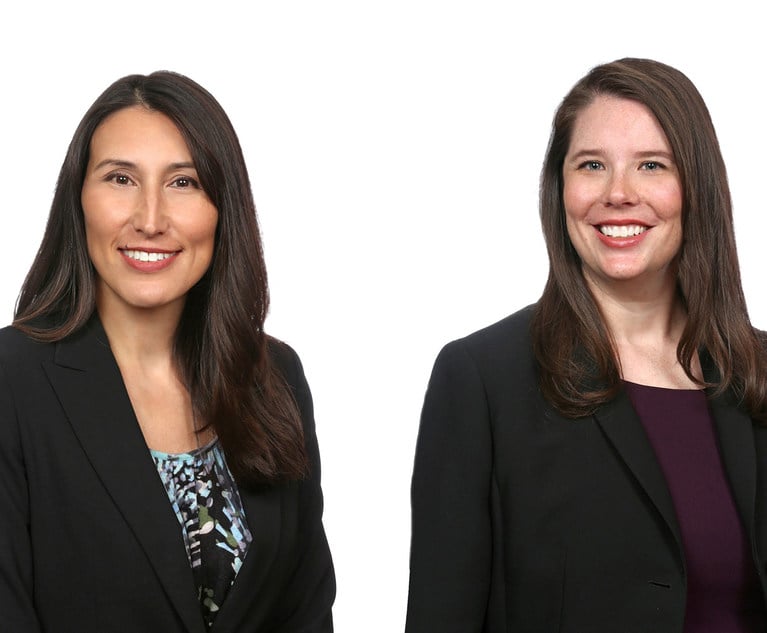During a pandemic, the transmission of infectious disease can be anticipated not only in healthcare settings but also in many types of workplaces. Given the likelihood of potential COVID-19 exposure across numerous industries, every employer should understand the obligations for workplace safety imposed on them by federal and state occupational health and safety laws, and develop an infectious disease preparedness and response plan that addresses the levels of risk associated with worksites and the job tasks workers perform at those sites.
Employers that plan for and respond to these risks may experience fewer worker illnesses, lower absenteeism, less business disruption, fewer workers’ compensation claims and better defenses to potential litigation arising from alleged negligent exposure to COVID-19.
Finally, all organizations should be aware of the risks of civil liability for exposing members of the general public, as well as their family members, to COVID-19 and should establish reasonable protocols and procedures to minimize such risks, as discussed in Part 2 of this series. The first such lawsuit was filed on April 6, 2020, in Illinois state court against Walmart by the family of an employee who died after contracting COVID-19 at work. The complaint alleges that Walmart failed to follow relevant guidelines for maintaining safe workplaces and hired new workers without properly screening them for symptoms of COVID-19.
Obligations on employers to ensure workplace safety
COVID-19 is now considered a “recordable illness” under the Occupational Safety and Health Act, and so many coronavirus-related complaints have been received by the Occupational Safety and Health Administration (OSHA) that it has stopped sending letters requiring a response from employers. OSHA is instead opting to send notification letters directing employers who have received a complaint to OSHA guidance and resources on addressing COVID-19 workplace safety. Many of the 28 OSHA-approved state agencies have likewise fielded numerous complaints. Oregon OSHA, for example, which typically receives about 40 complaints a week, had by early April 2020 received at least 2,206 verified complaints related to the coronavirus in the preceding two weeks.
OSHA’s General Duty Clause
All employers are required by OSHA’s General Duty Clause to provide each worker with employment “free from recognized hazards that are causing or are likely to cause death or serious physical harm.” Employers have a non-delegable duty to recognize and control hazards in the workplace. This includes a duty to protect employees from inhalation exposures that can result in injury, illness or death.
COVID-19 is a harmful exposure if there is an increased risk of infection at the workplace. In that event, employers must implement engineering controls where feasible and administrative controls where practicable, or provide respiratory protection where engineering and administrative controls cannot protect employees. Details on these controls are discussed below.
The General Duty Clause also may obligate an employer to inquire into the details of an employee’s illness and mandate that exposed employees stay away from the workplace. The Equal Employment Opportunity Commission (EEOC) has classified COVID-19 as a “direct threat,” meaning that it presents “a significant risk of substantial harm to the health or safety of the individual or others that cannot be eliminated or reduced by reasonable accommodation.” This classification lessens certain restrictions of the Americans with Disabilities Act and other related statutes. Employers may therefore generally ask an employee if he or she is experiencing symptoms consistent with COVID-19 and may measure an employee’s body temperature. The employer should nevertheless submit any such inquiry consistently and without subjective discrimination.
Recordable and reportable illnesses
Employers may be liable for failing to file incident reports and properly record summaries of employees affected by COVID-19. Pursuant to OSHA recordkeeping requirements (29 CFR part 1904), covered employers must record certain work-related injuries and illnesses on an OSHA 300 log. OSHA has the general authority to request that an employer produce OSHA form 300 logs and form 300A summaries at any time without cause.
To determine whether an employer must record an employee’s diagnosed case of COVID-19, OSHA recommends verifying that it is a confirmed case of COVID-19, that the case is work-related and that the case involves one or more of the general recording criteria set forth in 29 CFR 1904.7 (e.g., medical treatment beyond first aid, days away from work).
An employer’s reporting obligation to OSHA is narrower than the duty to record. Employers must report work-related fatalities within eight hours and work-related inpatient hospitalizations within 24 hours.
What is a “confirmed case” of COVID-19?
The CDC defines a “confirmed case” of COVID-19 to include a laboratory-confirmed case rather than simply a person under investigation (PUI) or a presumptive positive case of COVID-19. OSHA’s recording requirement only applies to a laboratory-confirmed case.
When is an exposure to COVID-19 “work-related?”
An employee who is infected by COVID-19 at work will be considered to have a work-related illness. “Contagious diseases such as tuberculosis, brucellosis, hepatitis A, or plague are considered work-related if the employee is infected at work.” See 29 CFR 1904.5(b)(2).
Confusion arises, however, where an employee shows signs or symptoms of COVID-19 while working but the exposure to the virus may have occurred outside the workplace. In many instances, it may be difficult or impossible to determine the source of exposure. This is particularly problematic with COVID-19 due to the long latency period between exposure and initial symptoms. This will be a fact-specific determination performed on a case-by-case basis. Factors may include the extent and timing of the potential work-related exposure, and whether more than one employee within the workplace has a confirmed case of COVID-19.
Other OSHA regulations
There are certain other OSHA regulations that apply to all employers and that may be applicable to protect employees from COVID-19 exposure in the workplace. This includes the requirement that all employers have an injury and illness prevention program (IIPP) to protect employees from workplace hazards, a mandatory requirement that all employers provide access to washing facilities and the general duty of all employers to conduct a hazard assessment to determine the potential necessity of the use of personal protection equipment (PPE).
In the context of COVID-19, this also may include a duty to protect workers from exposure to hazardous chemicals used for cleaning and disinfection. Employers that use hazardous chemicals must comply with OSHA’s Hazard Communication Standard, 29 CFR 1910.1200.
OSHA’s bloodborne pathogens standard, 29 CFR 1910.1030, applies to occupational exposure to human blood and other potentially infectious materials. Although this typically does not include respiratory secretions that may transmit the coronavirus, certain provisions of the standard offer a framework that may help control some sources of the virus.
Some of the 28 OSHA-approved state plans also may have certain requirements that are more stringent than federal OSHA requirements. California’s Aerosol Transmissible Diseases (ATD) Standard, for example, requires protection for workers exposed to airborne infectious diseases such as COVID-19. See, Title 8, California Code of Regulations §5199. The ATD Standard applies to hospitals and other medical facilities, certain laboratories and public health services, correctional facilities, homeless shelters and certain other locations.
Ian Stewart is a partner with Wilson Elser Moskowitz Edelman & Dicker LLP’s Los Angeles office, with a focus on complex general casualty, cannabis law, product liability, transportation, data privacy and intellectual property litigation. He can be reached at [email protected]. Jana S. Farmer is a partner with Wilson Elser Moskowitz Edelman & Dicker LLP’s White Plains office and represents client interests in intellectual property matters, protection of creative assets and general commercial disputes. She can be reached at [email protected].
Editor’s Note: This is Part 1 of a two-part series addressing employer responsibilities surrounding COVID-19. Part 2 will examine the specific elements of an infectious disease and response plan and address some of the possible lawsuits that could arise from COVID-19 exposures. It will appear on PropertyCasualty360.com on 4/10/20.
Related:
- Business insurance coverage in the COVID-19 era
- COVID-19 puts the workers’ compensation system to the test
- Occupational disease victims neglected by workers’ comp system
NOT FOR REPRINT
© 2024 ALM Global, LLC, All Rights Reserved. Request academic re-use from www.copyright.com. All other uses, submit a request to [email protected]. For more information visit Asset & Logo Licensing.


 All organizations should be aware of the risks of civil liability for exposing members of the general public and their families to COVID-19. (Photo: ALM Archives)
All organizations should be aware of the risks of civil liability for exposing members of the general public and their families to COVID-19. (Photo: ALM Archives)




